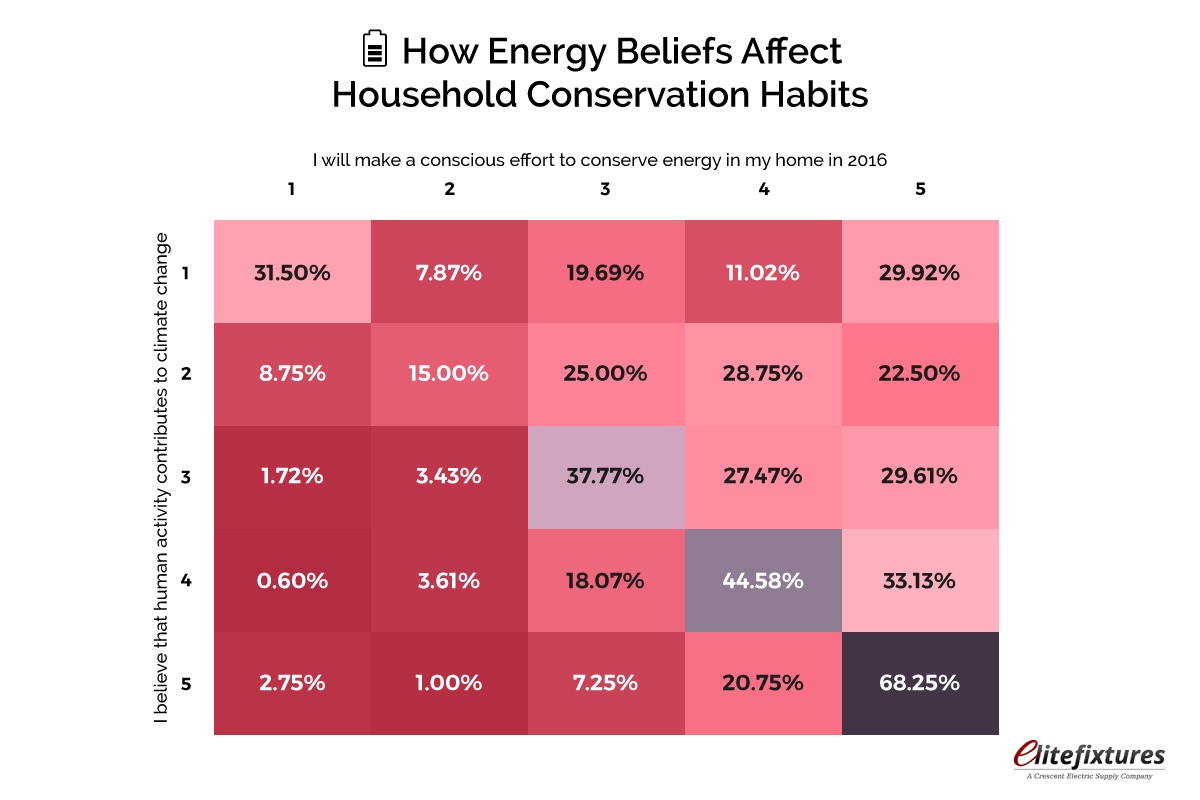Being eco-friendly is a cultural trend that’s gaining in popularity. A new survey by EliteFixtures revealed that the average American is three times more likely to report making a conscious effort to conserve in the home if they believe humans have a direct impact on climate change.
So, if you want to reduce your carbon footprint and reduce your energy bill, here are some steps you can take.
1. Turn off what you’re not using
This is a small, easy way to conserve energy. Think about all the lights you might leave on in your house – that’s just wasted energy and wasted money. Not only that, but you’re burning up the life of the bulb needlessly. Outside of lights, think about the electronics that you might leave on. Are you still watching the TV? Did you leave it on when Netflix stopped and just forgot to turn it off? What about a speaker playing music when you’re doing something else? All these things add up. Making an effort to think about turning them off is a start for savings.
2. Adjust the thermostat
One of the highest energy-consuming things for your home is your heating and cooling. Sure, we all want to be warm in the winter and cool in the summer, but at what temperature can you be comfortable? Adjusting the thermostat by just a couple degrees will definitely make an impact on how much energy you’re using. If you’re really looking for savings and ways to reduce your carbon footprint, consider buying a programmable thermostat. These handy devices let you set a schedule for your home. You can have it change the temperature so it’s not in use as much when you’re not home. Or if you like it set a certain way at night but don’t care as much during the day, you can program it for that.
3. Switch out old light bulbs and fixtures
Another small way to reduce your home energy consumption is to switch out old light bulbs and fixtures, such as shower heads and faucets. Switching to CFLs can reduce energy use by up to 75 percent. If you want to spend a little more upfront, LED bulbs are also energy efficient and can last for years. It’s a small investment to save you both time and money in the long run. Also, consider switching out your faucets and shower heads to something more efficient. There’s plenty of stylish options out there that are also eco-friendly. You’ll reduce the amount of water you use, which helps you and helps the environment.
4. Check insulation and windows
This option could be a bit pricier, but it can be worth it. If you’re in an older house, chances are the insulation and the windows are outdated. Those outdated windows can easily leak out the temperature-controlled air from your house. That’s making your AC unit or furnace work harder and consume more energy. Likewise, replacing or adding insulation to your attic will keep the cool air in your house during the summer, increasing the efficiency of your unit. If you’re using a contractor, a good standard is to reach “R30,” which is something they should understand. Energy can cost a lot, especially in peak heating and cooling months. No one likes paying more for something than they should, so be mindful of changes you can make both large and small. Additionally, using less energy is a great way to put less stress on the environment, and going green is rarely a bad thing. Featured photo credit: Elite Fixtures via elitefixtures.com
